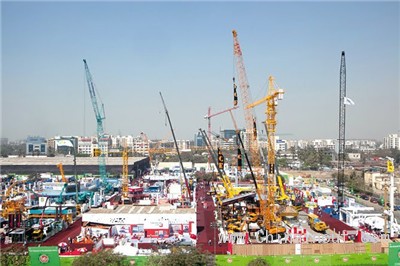正式批准的564个经济特区中,截至今年6月,只有192个是可以运作的
经济特区(SEZs)可能是莫迪实现雄心勃勃的“在印度制造”计划的中心内容。但是业内专家表示,撤销税收优惠政策的做法使得经济特区变为一个毫无吸引力的命题。
在原来的计划中,在经济特区的企业可免缴账面利润的最低替代税(MAT),开发商则可免缴股息分配税(DDT)。但有迹象表明很多公司滥用该政策来进行房地产套利以及许多IT公司使用这条政策来弥补在印度软件技术园区(STPI)计划结束时遭到的税收优惠损失,有鉴于此,所有的这些税收优惠都取消了
从2011-12年起,特区中的各单位和开发商的最低替代税豁免权被撤回,开发商的股利分配税豁免也被终止。最低替代税按20%的账面利润征收,而股利分配税按分配给股东的股息的20%征收
德勤·哈斯金斯&塞尔斯公司的合伙人尼鲁·阿胡亚表示,经济特区最吸引人的地方就是可以不缴纳所得税。“如果征税的话,那势必影响公司的利润,所以导致企业对经济特区变得不那么有兴趣了。”
普华永道公司的合伙人维维克·梅赫拉强烈建议废除DDT和MAT,然而新德里一家智库即国家公共财政与政策研究所的专家卡维塔·饶则坚决反对。她坚称“企业已经获得了很多激励,所以通过MAT来下调企业所获得的好处也并非坏事,我们应该讨论的是需要征多少税。”
印度国际经济关系研究委员会的一名教授阿皮塔·慕克吉,这家新德里智库也在带头研究经济特区政策的成本效益分析,他表示征收MAT将使得经济特区变得没有吸引力,并且对投资者的情绪造成了不利的影响。因为在WTO规则下,征收MAT是可能受到惩罚的;所以有必要提供符合WTO规则的更好的利商措施和激励
尽管征税问题还存在争议,但真正对投资产生影响的其实是税制的不可预测性。Icrier( 印度国际经济关系研究院)的经济学家Anwarul Hooda和Durgesh Rai,在贸易与投资壁垒的研究中认为“无论国际或者国内,税收政策的可预测性是形成有益投资环境的必要条件,因此撤销直接征税的优惠让SEZ计划倒退,并影响了它的前景。”
到目前为止,564个经济特区已经批准,至今年6月份,只有192个在运行中。这些特区2014年的就业总人口为1,277,645人,原本预期是2009年就业人口就达到1,743,530人。虽然经济特区在总出口额中所占的比重从2006-07年的6%提升至2010-11年的28%,不过据认为在后来的几年里特区占出口总额的比例已经下降。整个经济特区的占地61,624公顷,中国单深圳就占地49,300公顷。
不论怎样,Mehra说“经济特区政策将继续关系到印度的发展前景,但是为了促进它们继续下去,几个政策的必须争取”。Mehra认为提高它们的可行性需要“制造商应该被允许在国内市场销售,但是应该在进口单独的零部件上增加关税而不是增收整个产品的关税,这将使得企业无法生存。没有关税应该增加国内增值税。”
印度与斯里兰卡、日本及东南亚国家联盟签订了一系列的自由贸易协议,并将几种商品的进口税减为零。这将影响经济特区企业在本地的销售,因为这些商品的税一直处于较高水平。马赫拉建议:“印度的生产商应该享受”最惠国“待遇,这意味着根据自由贸易协定印度的制造商享受最低的税率。”饶对以上观点表示赞同,并且表示“这种削减税率的方式应当惠及所有制造商,不应当只局限于经济特区内。”
但是专家表示税率问题并不是阻碍经济特区的唯一困难。据慕克吉声称:”尽管中央和地方出台了超过300多项经济刺激政策与计划,但是制造业大体上还是没有任何提升。因此,刺激政策的出台都应该慎重评估与研究。刺激政策不应该成为企业落户经济特区的唯一原因。要想成功,就得实行利商的便利措施。地理位置、基础设施、物流以及专业的特区管理将会是决定经济特区成败的4大决定因素。”
经济特区政策在中国能成功的主要原因是有足够的基础设施、能源、公路和港口;印度没有这些。Rao说“让经济特区和制造业在印度发展,需要建造必要的基础设施,这需要采取全局性的策略。
Anwarul Hooda和Durgesh Rai在他们的研究中也指出“经济特区形式严峻的另一个主要原因是缺少与外部沟通的基础设施支持。经济特区需要与具有世界级公路和铁路的港口和机场相连;港口和机场也是,必须是世界级的,海关当局也需要采用国际化的最好做法,从而有利于贸易的进行。但目前印度都不具备这些。目前印度电力的缺乏也是一个主要的制约因素。(中国进出口网)
Of the 564 SEZs formally approved, only 192 were operational as of June this year
Special Economic Zones (SEZs) are likely to be central to realising Prime Minister Narendra Modi's ambitious Make in India agenda. But the withdrawal of tax incentives has made SEZs an unattractive proposition, say industry experts.

Under the original scheme, businesses in SEZs were exempted from the minimum alternate tax (MAT) on book profits and developers were exempted from payment of the dividend distribution tax (DDT). But with indications that companies were misusing the policy for real estate arbitrage and that information technology companies were using the policy to recoup tax benefits that they lost when the Software Technology Parks of India (STPI) scheme ended, these exemptions were withdrawn.
From 2011-12, MAT exemptions for SEZ units and developers were withdrawn and DDT exemptions for developers were terminated. MAT was levied on book profits at the rate of 20 per cent, while DDT was levied at 20 per cent on dividends distributed to shareholders.
According to Neeru Ahuja, partner at Deloitte Haskins & Sells, a key attraction for corporate houses was the income- tax holiday. "With taxes being levied, the savings for companies on account of tax concessions was reduced, impacting interest in SEZs," Ahuja said.
Vivek Mehra, partner at PricewaterhouseCoopers, argues DDT and MAT should be scrapped, while Kavita Rao, professor at the National Institute of Public Finance and Policy (NIPFP), a Delhi-based think tank, disagrees. She argues "as companies have been given incentives, toning those down through MAT is not a bad idea, per say. What can be debated is the level at which the tax is levied".
Arpita Mukherjee, a professor at the Indian Council for Research on International Economic Relations (Icrier), another Delhi-based think tank heading a study on analysing the cost benefit analysis of the SEZ policy, says the imposition of MAT has made SEZs unattractive and adversely impacted investor sentiment. This is because MAT exemptions are punishable under WTO (World Trade Organization) rules; there is a need to provide better business facilitation packages and incentives that comply with WTO rules.
Though the issue of taxation is contentious, it is the unpredictability of the tax regime that has had an impact on investments. In their study on trade and investment barriers, Anwarul Hooda and Durgesh Rai, economists at Icrier, argue "predictability in taxation policies is a sine qua non for making the environment conducive for investment, whether foreign or domestic, so the withdrawal of direct tax benefits has been a setback for the SEZ programme and has affected its future prospects".
Of the 564 SEZs that have been formally approved so far, only 192 were operational in June this year. Total employment in these enclaves was 1,277,645 in 2014, as against an expectation of 1,743,530 by 2009. While the share of SEZs in total exports rose from six per cent in 2006-07 to 28 per cent in 2010-11, it is believed to have declined in subsequent years. The total area under SEZs currently stands at 61,624 hectares, while Shenzhen in China alone covers 49,300 hectares.
However, Mehra says "the SEZ policy continues to be relevant from a Make in India perspective but several policy initiatives are necessary to get those going". Mehra argues that for improving their viability "manufacturers should be allowed to sell goods in the domestic market but duty should be imposed on individual parts imported and not on the entire product, which would make it unviable. No Customs duty should be imposed on domestic value added".
India has signed a number of free trade agreements (FTAs), with countries such as Sri Lanka, Japan and the Association of Southeast Asian Nations (Asean), under which import duties have been slashed to zero for several product lines. This impacts local sales of SEZ units, which are taxed at higher rates. Mehra proposes that "manufacturers in India should have the 'most favoured nation status that implies lowest tariff under the FTAs". Rao concurs, saying "such reductions should be extended to all manufacturers, not simply the ones in SEZs".
But experts contend that taxation issues are not the only ones impeding SEZs. According to Mukherjee, "Despite offering over 300 incentives and schemes for promotion of manufacturing at the Centre and state levels, manufacturing growth has not risen substantially. Therefore, incentives need to be carefully evaluated and studied. Incentives should not be the only reason for units to be located in SEZs. Success depends on the business facilitation measures adopted. Location, infrastructure, logistics and professional zone management are four key factors determining success of SEZs."
A major reason for the success of SEZs in China was the creation of complementary infrastructure, power, roads and ports; these are lacking in India. According to Rao, "To get SEZs and manufacturing going in India, the focus should be on creating the necessary infrastructure which will require a more holistic approach."
"Anwarul Hooda and Durgesh Rai, in their study, also point out: "Another major reason for the SEZs languishing is the absence of external infrastructure support. The SEZs have to be connected with ports and airports with world-class roads and rail; ports and airports, too, have to be world-class, with Customs authorities adopting international best practices in trade facilitation. This is not the case at present. Deficiencies in the availability and quality of power are an equally important constraint."











